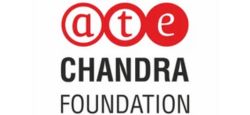Fundraising, as everyone in the social sector will tell you, is key to an organisation’s growth. A nonprofit can only create long-term change if it has the funds to carry out its operations. Fundraising therefore determines the financial health of an organisation; it is the social sector equivalent of sales.
This case study provides you a window into how two organisations—Adhyayan Foundation and Reap Benefit—were able to build this fundraising muscle in-house using a capacity-building grant, and the multilevel impact it had within 12 months.
Adhyayan Foundation is a capacity-building organisation that seeks to improve the quality of education in India. They do this by focusing on the leadership and governance of teaching and learning in schools. Reap Benefit uses a combination of grassroots mobilisation and technology to identify, nurture, and sustain grassroots leaders to combat civic and climate change.
Both organisations work with a range of stakeholders (including children and young people, citizens, and governments) doing high-impact work in their respective areas. Raising adequate amounts of money has been key in getting them to this stage, but it’s been a journey fraught with challenges and learnings.
Starting small
Adhyayan’s initial years were rough
Adhyayan officially began operations in 2017 with two small pools of funding—friends and family, and a loan from the board of directors. This money was used to run pilots that showcased their work to different stakeholders including governments, partner nonprofits, and funders. The goal was to demonstrate proof of concept.
In 2018, they got access to two important sources of funding—an institutional donor and a quasi-government body. The donor funded Adhyayan to take their programme to Goa, and the quasi-government body supported them to do work in Delhi. As with most start-ups, the process wasn’t organised, intentional, or focused. It happened because of the founders’ existing network.
When COVID-19 hit in 2020, Adhyayan lost their major donor. For two years they had been completely dependent on this one donor, who, before the pandemic, was exploring possibilities of taking their work to a few states and supporting this expansion. However, one month before the grant expired, they called Adhyayan to tell them that they couldn’t fund them any more because they had to divert their funds towards COVID-19 relief.
This was a huge blow, because the organisation had 17 team members and no pipeline. They had some money from their retail fundraising efforts (approximately INR 7–10 lakh). But it wasn’t enough to pay salaries and so they had to let go of most of the team when the project ended in June. The bigger challenge was to deliver on the MOU and the commitments they had made to the state government of Goa, where they were already working. Fortunately, enough capacity had been built within the government over two years and so they were able to take forward the multiple aspects of driving school improvement independently.
2020 was a crucial year. It was the start of COVID-19 and companies and funders were all either giving money to PM CARES or COVID-19 relief. Given Adhyayan’s work and mission, it didn’t make sense for them to pivot to relief work—they wanted to continue focusing on strengthening school quality in a way that was systemic and strategic. After speaking to several donors, they found one that was willing to support them. Once they looked at Adhyayan’s documents and spoke to their past donors, this donor gave them a lifeline grant—a small amount of money that would focus on helping them continue their Goa programme while also building their fundraising muscle. Their mandate was simple: Use the money to hire a person who will raise the funds you require to grow your work.
Reap Benefit’s start was less turbulent
Reap Benefit (RB) was registered in 2013, and for the first few years most of their money came from disparate sources—they got their first big grant four years after they were established. Initially the organisation received funds from fees (either from the young people they worked with or the school management committees in the low-income schools), contracts from foundations, and income from fellowships (Ashoka) and competitions that they entered such as MIT GSW, Ashoka, and Stanford.
Reap Benefit found themselves in a love–hate relationship with funding—they knew they had to invest time and resources to raise money, but also found that doing so took them away from work on the ground.
In the second phase, in 2016, RB started receiving grants from HNIs and family foundations. These were people who had seen their work and impact, had built relationships with the team, and were interested in showing their support. At the same time, the organisation was trying to raise funds from larger domestic foundations but weren’t finding success. As someone who works at the intersection of several areas such as citizen engagement, youth, education, civic governance, and more, RB didn’t fit into the cookie-cutter model most foundations look for. And as such they found themselves in a love–hate relationship with funding—they knew they had to invest time and resources to raise money, but also found that doing so took them away from work on the ground.
Finding the fundraiser
In the development sector, funds raised and budget sizes are seen as a proxy for scale. And, with many funders, as a proxy for impact. Despite being a lazy, and in almost all cases an inaccurate method of measuring impact, this way of thinking compels many founders to focus disproportionately on fundraising—sometimes at the cost of the work being done at the grassroots.
At RB, Kuldeep Dantewadia (co-founder and CEO) says that he realised it was important for the founding team to be involved with the actual work on the ground. “Running a grassroots organisation is like running a restaurant. It is important for the best chef to spend time with the other chefs to teach them and enable the transfer of knowledge and, more importantly, the culture and integrity of the place. Ultimately, it is the early team members who must ensure that they have time to be on the field to transfer these aspects of the work.”
Kuldeep also felt that at a personal level he was unable to crack the corporate and global foundations when it came to sales. And that it might be valuable to have someone who could do that more effectively.
For Adhyayan, their donor mandate took them to ILSS’s fundraising programme. Like Kuldeep, Anushri Alva (CEO and founding team member) realised that she didn’t know how to raise money from established and traditional funders such as larger foundations and CSR. “We didn’t know how to raise money. And we didn’t have the luxury of time to learn slowly because we needed to execute immediately. One of our board members suggested the ILSS course to learn what others were doing and simultaneously learn to raise money for Adhyayan, and they funded us to attend the course.”

Getting it wrong
In 2019, RB was advised to hire a senior fundraiser with corporate experience and connections. They were a great fit—they truly believed in the mission, and Kuldeep didn’t have to spend time making a case for RB’s work. But it didn’t work out. Kuldeep says, “I realised people who come with a lot of experience are set in their ways and have large teams working for them. As nonprofits we don’t have that luxury. You have to think, do, reflect, all at the same time. We aren’t able to provide that separation of just thinking.”
When looking at fundraising hires, Adhyayan didn’t know where to start because the typical channels they would hire from tended to be other education nonprofits. “We thought that we needed somebody who had done fundraising for say eight to 10 years, was from the development sector, had raised money successfully for a larger portfolio, had the networks, knew how to make collateral, and knew how to set up systems and processes for fundraising,” says Anushri.
Adhyayan sought the help of a recruitment firm, which gave them an extensive list of candidates. And from that they were able to find a person who checked off all their criteria. They brought that person on board.
Adhyayan realised that if you bring a senior person on board, they won’t make collateral or do the lead generation, and if they do, they won’t be happy about it.
She was with Adhyayan for three months, and set up the basic systems and processes—such as a system to build a fundraising pipeline, generate leads, do the background research, document the meetings, and write different kinds of proposals for different categories of donors. She also set up all the templates for collateral and generated a very long list of institutional donors.
According to Anushri, the fundraiser did her research, was good at writing, and was an extremely thorough person. The gap was that she was used to working in a large, established organisation with sizeable funders, where the founders could just pick up a phone and get an INR 10 crore donation. Given the fact that Adhyayan was a small organisation trying to stay afloat during a pandemic, they needed someone who was able to think unconventionally more than someone who understood traditional fundraising routes.
Alongside that, Anushri also realised what Kuldeep had—if you bring a senior person on board, they won’t make collateral or do the lead generation, and if they do, they won’t be happy about it. (While Anushri’s fundraiser did do all these tasks, she was honest about the fact that most people at her level would not do the same.) Both leaders realised they needed someone who was willing to do a lot of the preparatory work that goes into fundraising— background research, pipeline building, proposal writing, follow-ups, and the gradual cultivation of trust and authentic relationships with new donors.
At RB, they call it ‘the socks and shoes’. It is the equivalent of tilling the soil before you start farming. Without it, the land isn’t ready to produce the crops you want to grow. “I realised that if I could get someone to do the socks and shoes well, then that would unlock time for me to do both—donor pitching and focusing on the organisation’s mission and operations.”
Getting it right
When Adhyayan’s attempt at the senior fundraiser hiring failed, their advisory board member asked them to split the money and hire two early career professionals instead. They asked Anushri to find people who were not traditional fundraisers but were younger, had good research and writing skills, and weren’t predisposed to a certain way of working.
“We divided the channels into retail and communications, and HNIs and institutional. We also removed the fundraising targets from the person’s KRAs. We told them to just do the process and all the groundwork needed to get to a donor. The conversion and actual raising of money would be my responsibility,” said Anushri.

In 2021, Tiasha and Jayati came on board at Adhyayan and Sukriti joined RB. Their work experience ranged from one to six years across nonprofits and corporations. Importantly, they had the required core skills—research, writing, persistence, boldness—to build the base for fundraising at their respective organisations. Here’s how it worked out:
1. Sticking to process
When Tiasha came on board at Adhyayan, she started by working off the systems and processes that their earlier fundraiser had put in place because it provided them a disciplined and systematic approach to get going. They followed up with every single lead that was on their list, discussing them internally every day, and kept a check on what was moving and what wasn’t. In addition, they continued to speak with the funders who weren’t able to support them—they would seek feedback on their current strategy, and build forward accordingly. (In fact, many of the donors who initially turned them down eventually converted.)
Given this level of effort and focus on fundraising, they had almost no time to run the project, but they persisted, and after several months those conversations began converting. Adhyayan also started focusing on renewals—building relationships with existing donors and engaging more closely with them, all the while making sure that new lead generation and new conversations continued to happen.
2. Managing donor expectations
Most funders expect to see CEOs or founders pitch to them for grants. But as a nonprofit grows, it is important that donor relationships are decentralised. In the case of Adhyayan, Tiasha and Jayati built their capacity to talk to donors directly. They started out by attending donor meetings, creating presentations, and building narratives, and quickly moved to leading those conversations. It worked so well that today donors get in touch with Tiasha and Jayati directly.
With RB, too, Sukriti has moved from laying the fundraising groundwork to managing some donors herself. Working on the day-to-day of fundraising allows a person to understand the organisation better; being on calls and meetings with leaders helps them understand different donor personalities, their preferences, and constraints. All this helps them learn what to pitch, and over time they are able to do this independently.
In anywhere between six and 12 months of joining their organisations, Tiasha, Jayati, and Sukriti were able to take a donor from start to close.
3. Building a culture of fundraising
Both Kuldeep and Anushri quickly realised that fundraising had to go beyond the one or two people in their organisations and become part of the organisation’s DNA. Both took two different but innovative ways to make this happen.
At RB’s team meetings on Tuesdays, funding is now an important agenda item so that everyone across levels is aware of what’s going on. In addition, the programme team started getting involved in fundraising conversations. Kuldeep and Sukriti would take their feedback, incorporate it in the proposals, and involve them in donor engagements, thereby making the fundraising process integral to the programme side of things as well. RB has even started reassigning revenue responsibility to programme leads, with the eventual goal to have leaders fundraise for their own units.
Moving to this stage allows RB to become more creative, according to Kuldeep. “In the past we engaged with our funders only for money. But now we are getting creative with the support they can provide us. For instance, we have reached out to a donor to ask if they would be willing to fund courses for our middle management, or if a tech foundation can help us build the tools we need. But this can only happen when the basics are taken care of—when you know that the plane is not going to crash. And you have the mind space to think about it.”
Everyone fundraising needs to know about the bigger picture as this allows them to see how they are part of building an organisation and are contributing significantly to it.
Adhyayan decided to make fundraising fun. They conceptualised an annual campaign that the entire organisation devotes time to once a year in order to build a culture of fundraising. Everyone knows they have to raise money for Adhyayan during a period of time in the year, so every single person raises money. Adhyayan has done this over the last two years, and is now trying to formalise it.
Anushri says that this reduced the pressure on Kavita (the founder) and her. “We felt so much pressure in terms of having to raise money, keep everything going. And we felt that it can’t be like this. Everybody must feel ownership and responsibility, and we should all problem-solve for it together.” This annual team campaign which decentralised fundraising meant that the sense of ownership gets distributed and hence the pressure eases on the leadership. It also means that everyone fundraising needs to know about the organisation and the bigger picture, allowing them to see how they are part of building an organisation and contributing significantly to it.
Alongside this campaign, Tiasha was building the capacity of every team in Adhyayan to manage donor relationships. She would help them prepare monthly reports and presentations and teach them how to present compelling narratives to funders.
And, lastly, outside of raising money for themselves, Adhyayan began to expand the pool of stakeholders investing in school quality. They helped private schools directly fund schools in Arunachal Pradesh, thereby creating an ecosystem of care and support.
4. Building a support group
RB also started building their own ecosystem of peer organisations with whom they could exchange notes on fundraising—different categories of donors, what works, what doesn’t. Bouncing ideas with peers who are grappling with similar issues and may have thought of creative solutions allows nonprofits to start thinking creatively as well.
The impact
Budgets for both organisations have grown exponentially. Adhyayan had a budget of INR 1.3 crore before they lost their major donor. They hobbled their way back to INR 55 lakh in 2021. Today they are at a budget of INR 3 crore and expecting to double it to INR 6 crore. RB has grown steadily and comfortably by 2.5 times to INR 7.6 crore in 2022–23.
Having enough money allowed Adhyayan to say no to funders. It also allowed them to be on more equal footing with their donors. They were able to negotiate with their funders, lay down norms, and set boundaries and expectations with them around deliverables, turnaround times, etc. “Once we had visibility of funding for the year, we were secure and could decide what we would and wouldn’t take on. Earlier we didn’t have the luxury of saying no since it was a matter of survival. Saying no has been very empowering. It has been a game changer,” says Anushri.
According to Kuldeep, adequate funding allowed RB to get off two treadmills—fundraising and talent. “It allowed us to think how we would operate with a budget of INR 8–12 crore, and grow our work through communities and technology. We don’t want to keep growing our budgets year on year and then keep fundraising endlessly. Because what is the statistical proof point that once you raise x amount of money, you will create impact? On the talent front, we don’t think we can or want to compete with other organisations for the same pool of talent. There is a different type of talent at RB and we want to invest in that. Having adequate money allows us to do so.”
Their advice to nonprofits
1. Don’t get enamoured by people from companies and large nonprofits
Do not get carried away by people with corporate experience and those who are well connected. Fundraising requires a mindset of thinking and doing. It cannot be an either–or situation. Hence, nonprofits should invest in someone who will do both the prep work required for the leadership to go and pitch as well as the pitching.
Kuldeep says, “Assume that fundraising is a sport in the world of nonprofits; you can’t say we’ll play this sport without a warm-up. A lot of fundraisers feel they can short-circuit this and just do strategy. However, I say that even if your fundraiser is not ‘charismatic’ as the world defines it but can do the socks and shoes very well, invest in them.”
2. Identify the complementary skills you need
In sales parlance, the CEO and founder is likely to be good at hunting, farming, or gardening, but never all three. Identify what you as a leader do well and naturally. And then go hire people with skills that complement yours. That division of labour also leads to a better working relationship and clarity of roles. If for instance the CEO is good at pitching to new funders, then they may need someone who can garden—manage and nurture those relationships and help them thrive. To do this, it’s important for a leader to understand their own blind spots and strengths.
3. Build ownership in the organisation
It’s important to stay really responsive to the environment (your changing situation, emerging funders, etc.). It’s also important to start embedding fundraising across the organisation and not just limit it to the fundraising team or the CEO. The more you decentralise your finances, the more ownership you can build in your team when it comes to money.
4. Be careful about the donors you pick
There is limited value in donors who say, “Give us a 30-second elevator pitch; talk to us for only two minutes and get us hooked.” It is important for donors to spend the time, ask questions, understand the work, and be willing to engage. For Anushri, this is becoming increasingly important. “We don’t want the super-impatient donors who want a big hook. There is little alignment with those kinds of funders and it’s hard for us to see the fit.” Investing in a fundraiser and building the culture of fundraising into an organisation’s DNA allows them to think deeply about how to get funded and what kind of opportunities they want to pursue.
5. Give your fundraising team a sense of the ground reality
Ensure that they have opportunities to regularly engage with field teams and work in the field themselves. This will help them better understand the organisation, align with the mission, and ultimately build a better narrative.
Their advice to funders
1. Be flexible
Kuldeep believes it’s important for funders to be flexible and give organisations breathing space when it comes to building fundraising capability. If funders would like to invest in a fundraising person for their grantee organisation, they should have a long view on it because there will be trial and error as that person learns.
If funders invest in a salesperson for a grassroots organisation, it frees up time and mind space for the founding team and lets them focus on delivery of their core services.
Both Anushri and Kuldeep say that the donor they worked with to build a successful fundraising engine was very flexible, which helped a lot. “They did have metrics. But soon we realised that the metrics were a way to hold us accountable to some extent. It did not prevent us from trying new things when initial ideas failed. And that was key to success,” says Kuldeep.
Moreover, it is doubly impactful if funders invest in a salesperson for a grassroots organisation, because it frees up time and mind space for the founding team. This allows them to focus on delivery of their core services, which is key as an organisation grows and strives to create impact. “Because I have had time to think after Sukriti has come on board, we have been able to develop a strong and diverse leadership team—around 50 percent of them are non-English speaking. It has allowed me to work with the team, which is one that can make things happen,” says Kuldeep.
2. Do not be prescriptive
Donors must realise that the work that nonprofits do have many moving pieces, and it’s hard to predict what will happen five years down the road. If your programme has to be sustainable, you have to build it with the communities. It can’t be a strategy and plan built in isolation, so donors must make room for that.
According to Anushri, there are donors who want things that are so specific that you have to be somebody who can predict the future. “Some of them have a linear way of looking at how outputs and outcomes emerge. This doesn’t give you the space to be responsive or follow the lead of the people you serve. Making a plan super-prescriptive takes away an organisation’s ability to explore things that are more creative and sustainable,” she says.
Despite its importance, not much attention is paid to building a fundraising muscle within nonprofits. Most donors are reluctant to pay for the non-programmatic costs of an organisation, which include fundraising, communications, impact measurement, and more. However, a relatively small investment in any of these functions has an outsized impact both on the nonprofit itself and on the communities they serve.
A capacity-building grant allowed Adhyayan and RB to invest in fundraising. And doing so not only increased the organisations’ budget, but also allowed them to build a stronger team, expand their work, and do right by the communities they serve. Through their journeys, both these organisations demonstrate the incredibly high returns that come from investing in a nonprofit’s core costs, not worrying about getting things wrong, and focusing on learning and trying again.
–
About Anushri and Kuldeep
Anushri Alva is the CEO and founding team member of Adhyayan. She has worked as a teacher and led educational programmes in India, East Asia, and the US over the last 10 years. Prior to Adhyayan, Anushri has worked with Teach for India, International Rescue Committee, Global Nomads Group, and Sanctuary for Families. She has a master’s degree in education from Teachers College, Columbia University; is an alum of Miller Center, a women-led cohort of the accelerator programme; and is on the organising committee for the India chapter of Teachers College.
Kuldeep Dantewadia is the co-founder and CEO of Reap Benefit. He has a bachelor’s degree in business management and has done short-term courses on environment impact assessment and strategic nonprofit management. Kuldeep is an Ashoka Fellow, Unreasonable Fellow, and Architect of the Future, and a recipient of the Unilever Young Entrepreneur Award.







